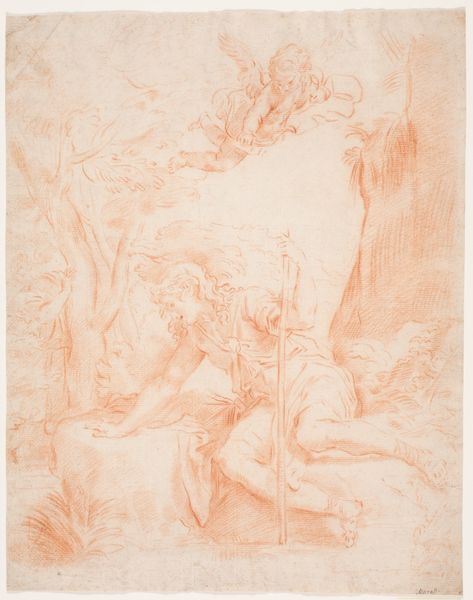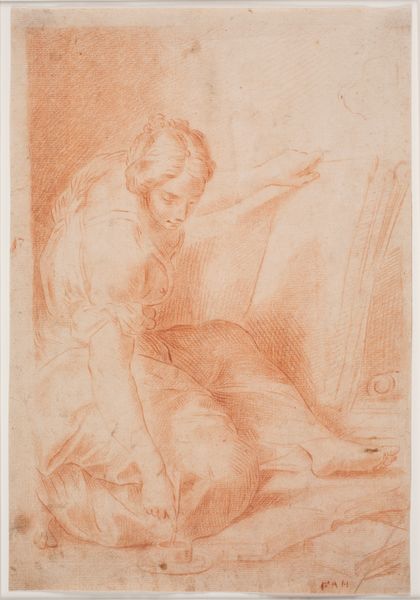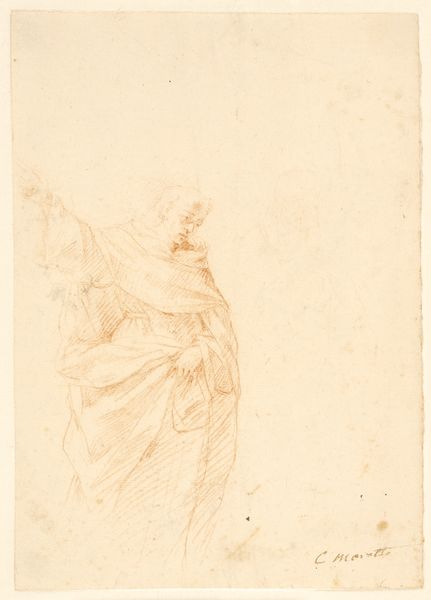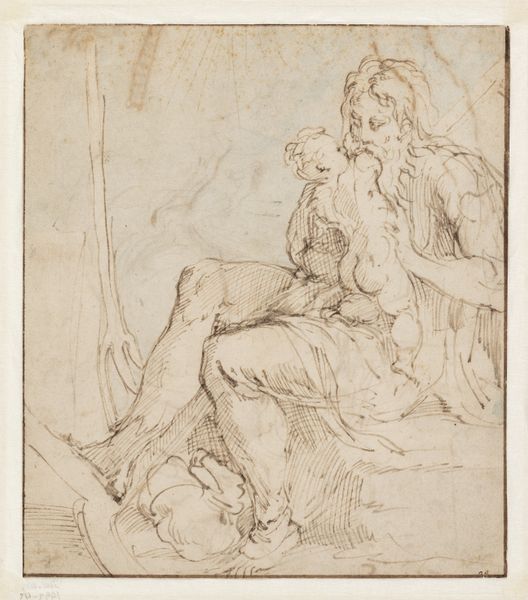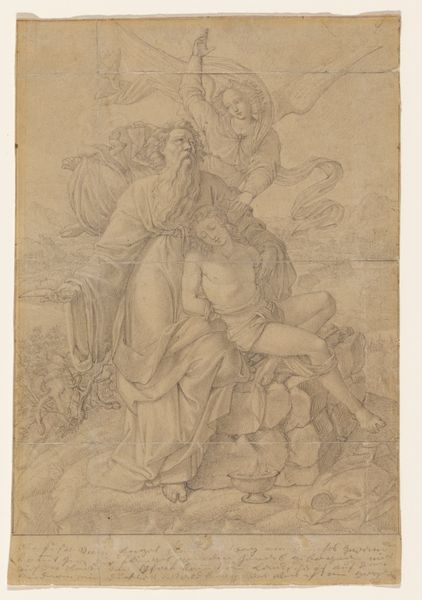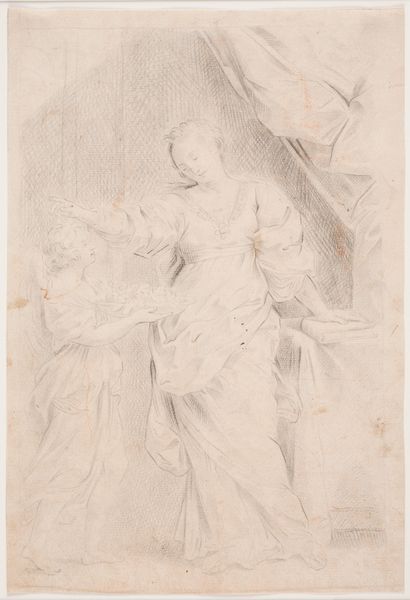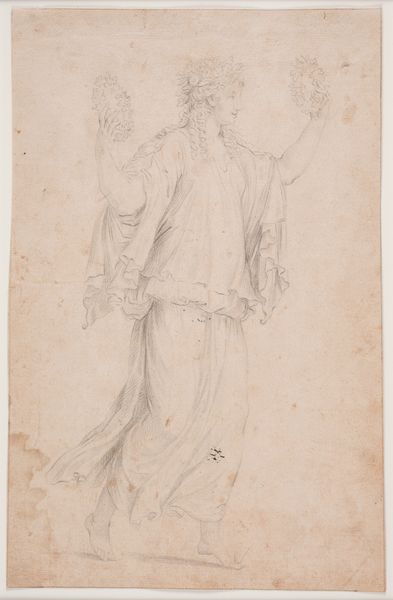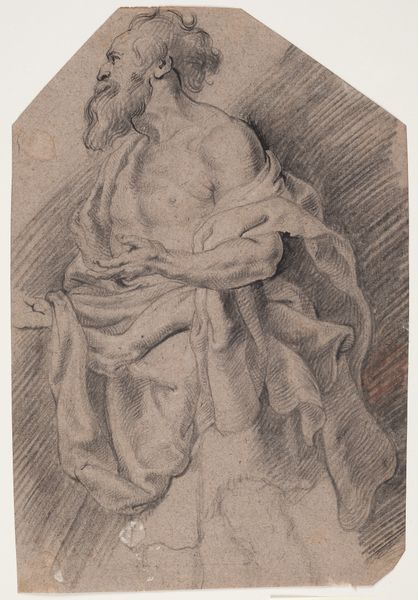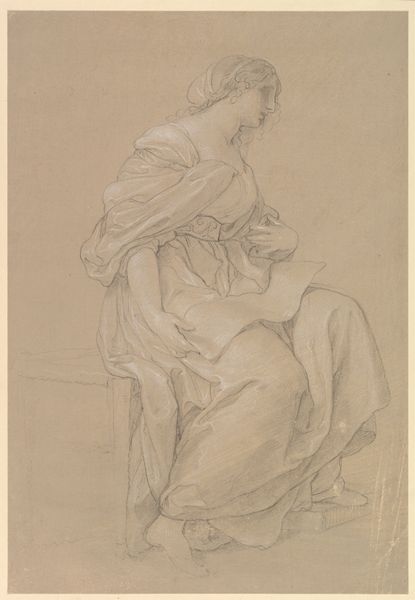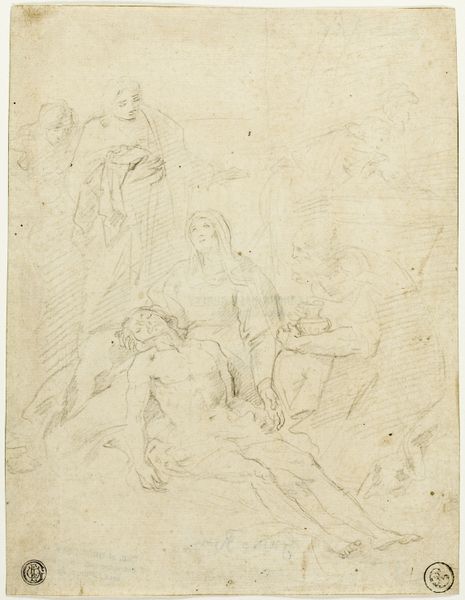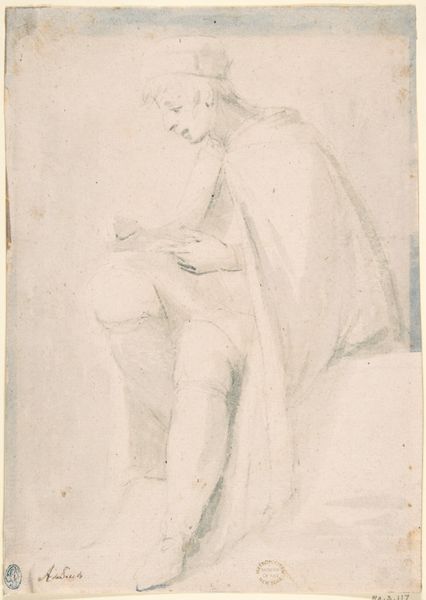
Jael dræber Sisara. Studie efter komposition af Carlo Maratti (Mezzetti, p. 345, nr. 150) 1671 - 1738
0:00
0:00
drawing, paper, pencil, pen
#
drawing
#
allegory
#
baroque
#
figuration
#
paper
#
pencil
#
pen
#
history-painting
Dimensions: 410 mm (height) x 290 mm (width) (bladmaal)
Curator: My first impression is how much of the violence is implied, yet still intensely present. The tent, the draped figure... It speaks volumes through suggestion. Editor: Indeed. What we’re looking at is a study titled "Jael dræber Sisara," translating to "Jael Killing Sisera," after a composition by Carlo Maratti. It was created by Hendrik Krock, sometime between 1671 and 1738, employing pen, pencil, and drawing techniques on paper. Curator: Krock's masterful rendering of light and shadow immediately grabs attention. The contrast focuses our eye sharply on Jael, positioned vertically, emphasizing her poised control, while Sisera is horizontally displayed as dead weight on the ground. Semiotically speaking, it represents the patriarchy overcome by matriarchy. Editor: Yes, Krock strategically uses the artifice of history painting to portray women as allegorical and at times deceptive symbols. The book of Judges tells the story of how Jael lures the defeated Sisera into her tent, offering him shelter before driving a tent peg through his skull. Think about how such imagery impacted a society with rigid patriarchal structures. Curator: The drape behind Jael, both as a pictorial element, and as the mechanism of deceit adds a layer. Its soft texture is meticulously crafted with fine, close-knit lines creating a captivating contrast to the starkly-lit, angular lines emphasizing her resolve and the violence she commits. Editor: What does it mean for the politics of image-making, especially with baroque history paintings in that era, that an artist would choose this particular narrative, and frame the subject matter in this way? Is this depiction empowering, cautionary, or simply an exoticized othering? Curator: Considering Krock’s choice of materials, and his deft application thereof, I believe that Krock, a technically adept artist was definitely inviting us to confront the power structures inherent in art. The symbolism woven into every stroke reveals the deep engagement the Baroque artists held toward a dynamic interpretation of the social order. Editor: Absolutely, this close look invites us to further analyze not just Baroque aesthetics but also its place within the broader socio-political discourse. Curator: A potent testament to the convergence of skill and ideology.
Comments
No comments
Be the first to comment and join the conversation on the ultimate creative platform.
